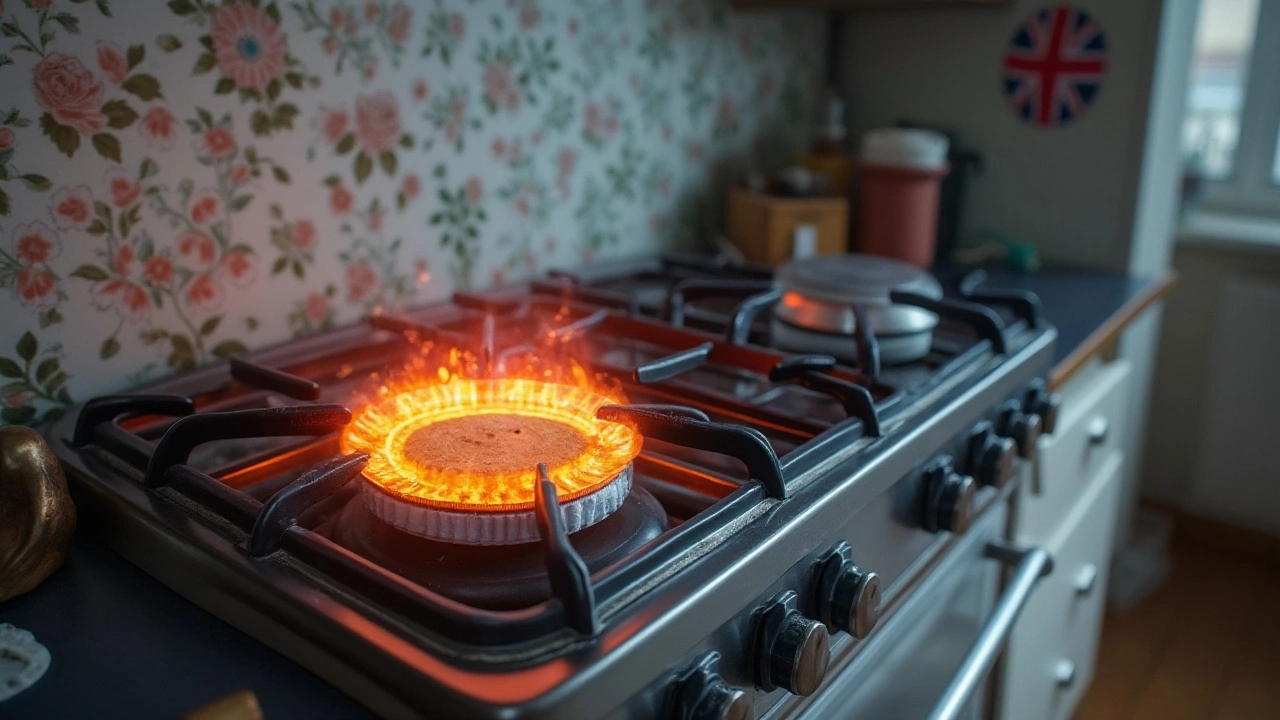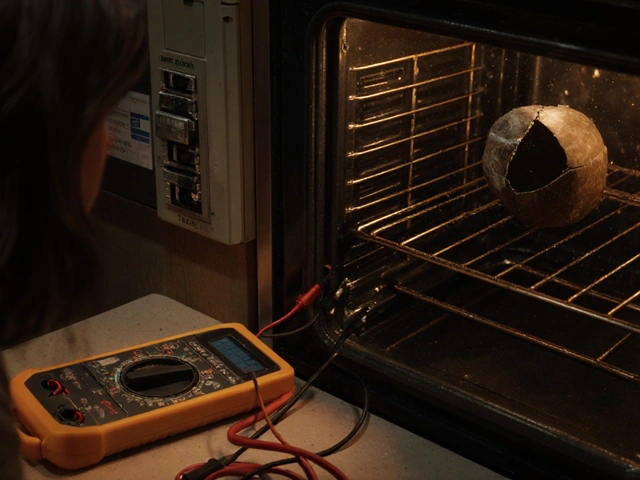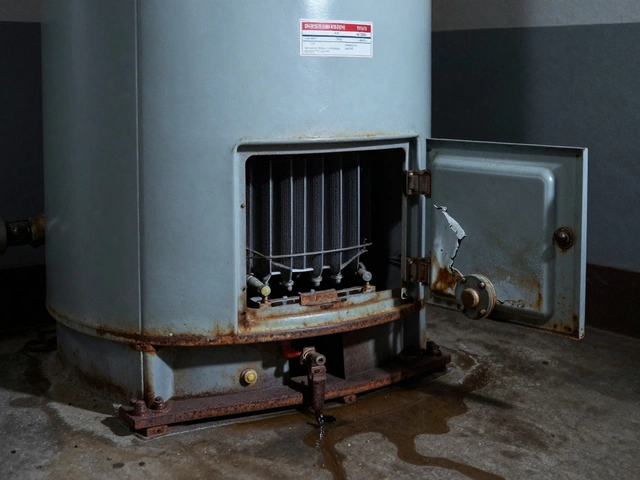If your beloved kitchen appliance, the gas oven, isn't up to its usual prowess, the igniter could be to blame. This essential component is crucial for lighting the gas and ensuring your meals cook just right. Recognizing the signs of a failing igniter can save you time, money, and a whole lot of frustration.
Perhaps you've noticed your oven taking longer to preheat or emitting an unusual odor. These could be telltale signs of a deeper issue. With a bit of know-how, you can pinpoint the problem early and decide whether it's time for a DIY fix or if it's best to call in a pro.
Join us as we delve into the world of gas oven igniters. Learn the symptoms to watch for, explore the reasons behind their failures, and discover practical tips to keep your kitchen running smoothly.
- Recognizing Symptoms of a Faulty Igniter
- Why Igniters Fail
- DIY Troubleshooting Tips
- When to Call a Professional
Recognizing Symptoms of a Faulty Igniter
Identifying the signs of a faulty igniter in your gas oven can feel like solving a mystery, where every symptom gives you a crucial clue about the problem you're facing. One of the most apparent signs that your igniter is on the fritz is when your oven takes an unusually long time to preheat. Normally, an igniter should glow brightly and ignite the gas within a minute or two. If it takes longer, this could mean it's not generating enough heat to open the safety valve and light the gas, thus delaying the cooking process.
Another clear indication is the presence of a gas odor. While it’s not uncommon to smell a hint of gas when you first light your oven, persistent odors are a red flag. When the igniter fails to heat up properly, gas can accumulate without igniting, leading to a smell that should prompt immediate attention. It’s a safety hazard, and in such a case, toggle off the oven immediately and ventilate your space. According to
Home Appliance Care, "If the igniter cannot ignite gas promptly, the risk of gas buildup increases, posing a safety hazard."
Unevenly cooked food is another symptom that won't stay hidden for long. A weak igniter results in inconsistent temperature control, which may result in dishes that are undercooked or cooked only in some areas. The inconsistency in the oven’s temperature is a telltale sign that something is amiss with your gas oven igniter. Checking the igniter for visible yellow sparks, rather than the usual blue or white glow, can also provide clues. This discoloration can mean the igniter is wearing out and needs replacement.
On occasion, you might hear a clicking sound when you try to start your oven. This is usually the igniter attempting to ignite the gas and failing. Coupled with this sound, if the oven door is hot to the touch yet the contents inside are cold, these are further indications that the igniter isn't functioning at its best. Visually inspecting the igniter can also be very telling. Cracks or other forms of wear and tear usually suggest it's time for a replacement.
To round up, one common yet often overlooked sign is the frequent activation of your oven's thermostat. If you're noticing the oven heating element cycles unnecessarily often, it might mean the igniter is struggling to maintain a constant flame. Recognizing these symptoms and their implications, a proactive approach can be taken to ensure your appliance is both functioning efficiently and safely.

Why Igniters Fail
Understanding why a gas oven igniter might fail involves delving into the design and function of these integral components. An igniter serves a critical role, igniting the gas that powers your oven. A breakdown in this system not only interrupts your cooking plans but can also pose safety risks. Multiple factors contribute to the decline and eventual failure of an igniter. One common reason is the natural wear and tear that occurs over time. Each time you fire up your oven, the igniter endures cycles of intense heat, which slowly degrade the materials.
Another culprit is dirt and grease accumulation. In the bustling environment of a kitchen, it's inevitable that these elements find their way into and onto your appliance. Over time, a coating of grime can impede the igniter's ability to function properly. The build-up acts almost like a barrier, preventing the igniter from achieving the correct temperature required to light the gas. It shows how routine maintenance and cleaning can extend the life of your oven components significantly. A simple schedule of wiping down surfaces and checking for dirt can make a world of difference.
Voltage issues can unexpectedly sabotage an igniter's efforts. An igniter relies on a certain voltage to heat up adequately. If this consistent flow of electricity is interrupted, the igniter won't perform its job effectively. These interruptions might be due to internal wiring problems or external electrical circuit issues. Manufacturers often suggest keeping an eye on the circuits for any irregularities, which could save you a call to the repairman in an emergency. Ultimately, such problems point back to the importance of having a stable and properly maintained electrical setup.
Material fatigue is an inevitable aspect of igniter functionality. Just like any other tool or component, igniters have a lifespan influenced by their manufacturing materials. Over time, the extreme temperatures can cause the igniter to crack or break.
"Consider the igniter as one of the workhorses of your kitchen. Regular use will naturally degrade its performance over years," says an expert from the Appliance Service Training Institute. This insight underscores the importance of periodic checks and potential replacements every few years, depending on usage.
The environment in which your oven operates can also play a significant role in the longevity of an igniter. In higher humidity regions, the risk of rust and corrosion is increased, potentially affecting the igniter's components. Even the materials that build up on the igniter can absorb moisture from the air, heightening the chance of rust. Regular inspections can catch these issues early, making simple repairs possible without extensive downtime or costly replacements.

DIY Troubleshooting Tips
Tackling your gas oven igniter issues doesn't always require a call to the repairman. With a bit of patience and the right approach, you can troubleshoot and perhaps even fix the problem yourself. First, ensure that the oven is unplugged and that you have turned off the gas. Safety should always come first when dealing with gas appliances. Once everything is secured and safe, you can begin your investigation.
Start by checking the igniter itself. A visual inspection is often all it takes to notice something amiss. The igniter should glow bright when functioning correctly. If it is only faintly glowing, or not at all, this might indicate it’s not getting the electricity it needs or has burned out. Use a multimeter to test continuity, which will help you determine if the igniter itself is faulty. If the multimeter shows there's no continuity, it’s likely time for a replacement.
In some cases, the problem might not be with the igniter but with the surrounding connections or the gas line. Ensure all connections to the igniter are snug and free from debris. Over time, connections can become loose or corroded, which may disrupt the power supply to the igniter. Remember to clean these regularly to avoid this common pitfall. Additionally, inspect the gas line for any leaks or blockages. A disruption in gas flow can mimic igniter issues, leading many to misdiagnose the problem. Replacing or cleaning the gas line can sometimes resolve these types of problems.
Sometimes, troubleshooting can be a bit tricky and requires a more methodological approach. Here's where the concept of trial and error comes in handy. Try replacing a suspicious part temporarily with a known working one to see if the problem resolves. While it might seem daunting, this process could save you from unnecessary expenses. Keeping a spare igniter on hand, especially if your model is prone to wear, can make this process smoother and more efficient.
"Regular maintenance can prevent most igniter issues," advises a household appliance expert. "Inspecting it twice a year should keep your oven running smoothly."
Another crucial aspect of troubleshooting is documenting everything. As you go through each step, take notes of what you've checked and any anomalies you've found. This documentation not only helps you keep track of potential issues but also provides valuable information if you ultimately need to consult with a professional. It can significantly expedite the diagnostic process with experts and offer insight into recurring problems that might be linked to broader appliance issues.
When resolving oven repair problems, testing patience and persistence is key. Keep in mind that while DIY troubleshooting can be productive, sometimes professional help is inevitable. If you're not comfortable dealing with electrical systems or gas lines, or if all your attempts prove futile, calling a technician is generally the best course of action. Knowing when to take this step is part of savvy troubleshooting, ensuring both your appliance’s longevity and your peace of mind.

When to Call a Professional
Dealing with a gas oven igniter that seems off its game can be tricky, and sometimes it's best to leave it to the experts. The complexity of gas appliances isn't just about intricate parts but also about safety concerns. When things aren't firing up properly or if there's a hint of gas in the air, a misstep can escalate quickly. Professionals have the tools and knowledge to tackle issues without the risk of a kitchen disaster, often detecting hidden problems that are missed during a regular check. It’s important to know your limits, especially when safety is at stake.
Firstly, consider calling a professional if the oven consistently fails to light. This could point to a defective igniter that isn't generating enough heat to open the safety valve. Sometimes people notice their oven emitting a strong gas smell and assume it's benign. However, lingering gas indicates a serious safety concern. Trained technicians can safely assess and repair the leak, minimizing potential hazards. Moreover, if your oven igniter clicks without igniting the flame, a professional can evaluate the underlying circuitry issues, saving you time and possible missteps.
Beyond safety, there’s an efficiency argument. Tinkering with an unfamiliar appliance might seem cost-effective, but you could inadvertently worsen the problem, leading to higher costs or even damaging the appliance. An expert can quickly confirm if you need a simple fix or a replacement of the entire igniter. Their experience means they recognize whether a quick adjustment is needed or if a more intensive overhaul is required, which might include replacing other connected components to enhance the overall efficiency of the oven.
When Maintenance Can't Wait
Sometimes, the timing of an issue can also dictate the need for professional intervention. For example, if your oven suddenly becomes unreliable before a big family event or holiday, you don't want to risk a half-cooked meal as the centerpiece of your gathering. Oven repair experts can provide a diagnostic assessment, often spotting issues that aren't immediately obvious and ensuring your oven returns to its optimal performance in time for the big day. They might even offer preventative maintenance tips, saving you future headaches.
| Common Issues | Professional Solutions |
|---|---|
| Frequent failure to ignite | Igniter replacement, check gas valve operation |
| Gas smell | Inspect and repair gas leaks, ensure proper ventilation |
"Sometimes, it’s worth calling a professional to truly get to the root of an issue and fix it right the first time," advises Connor Johnson, a seasoned technician with over a decade of experience in appliance repair.In essence, the benefits of calling in a pro are often worth it. From providing peace of mind regarding safety to ensuring the longevity and functionality of your appliance, a professional assessment is an invaluable resource. Not only does this preserve the quality of your meals, but it also protects your home, keeping it warm and hazard-free.





